En cours
A Venir
Billetterie
Collections en ligne
Actualités
Boutique
Restaurants et privatisation
27.04.23
.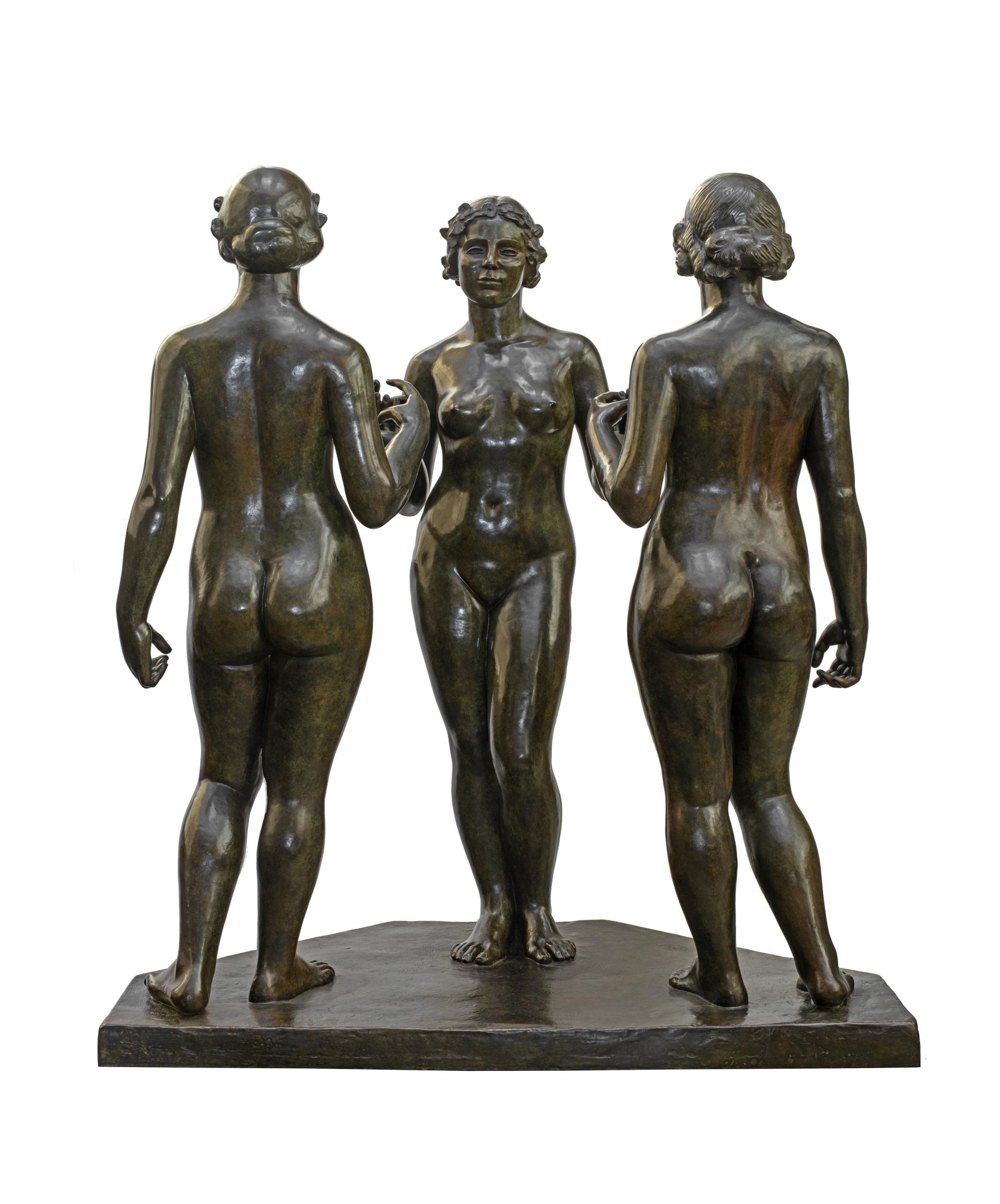
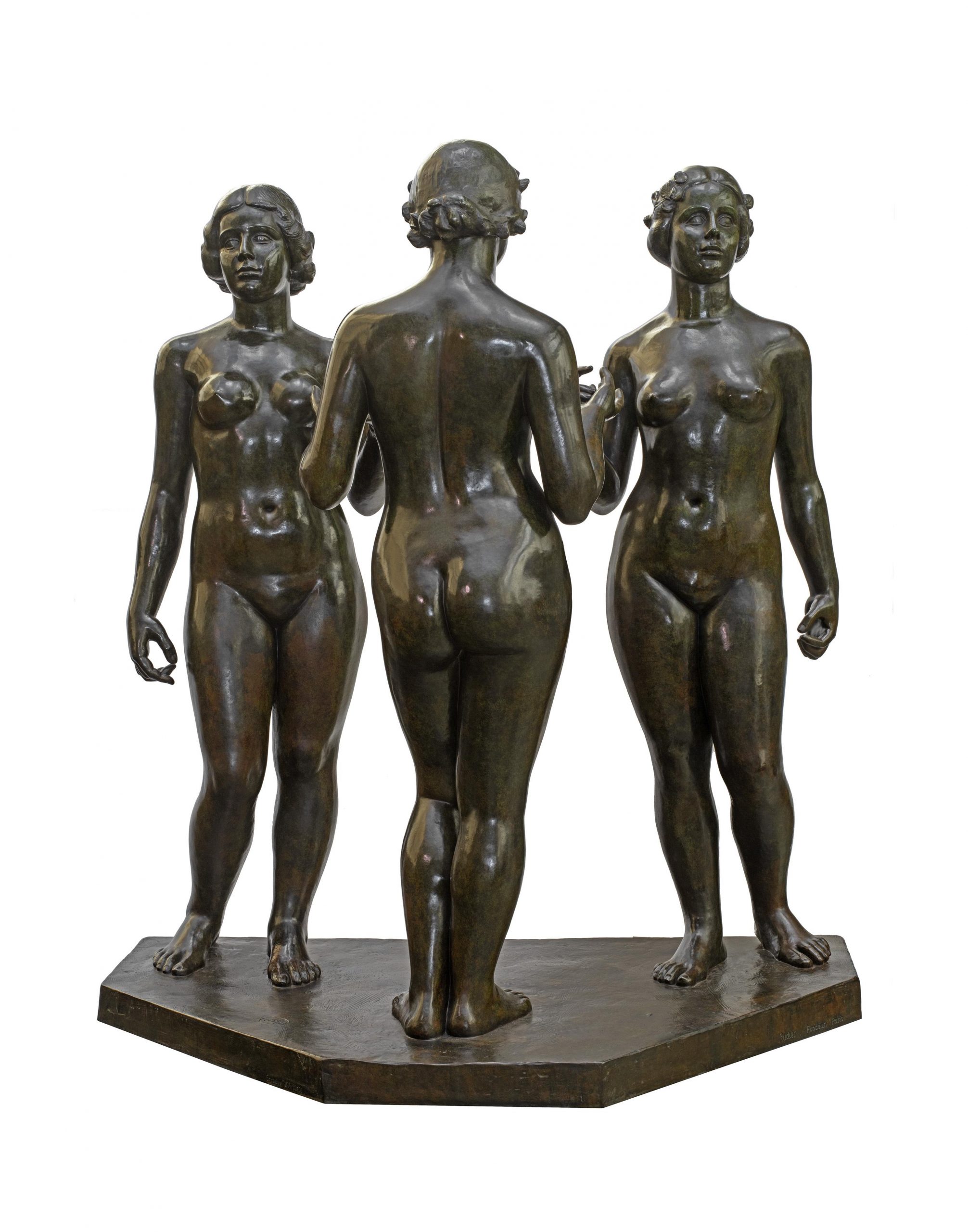
“Les Trois Nymphes de la prairie” 1930-1937, bronze, artist’s proof, 157 x 144 x 78 cm, Fondation Dina Vierny – Musée Maillol © Fondation Dina Vierny – Musée Maillol
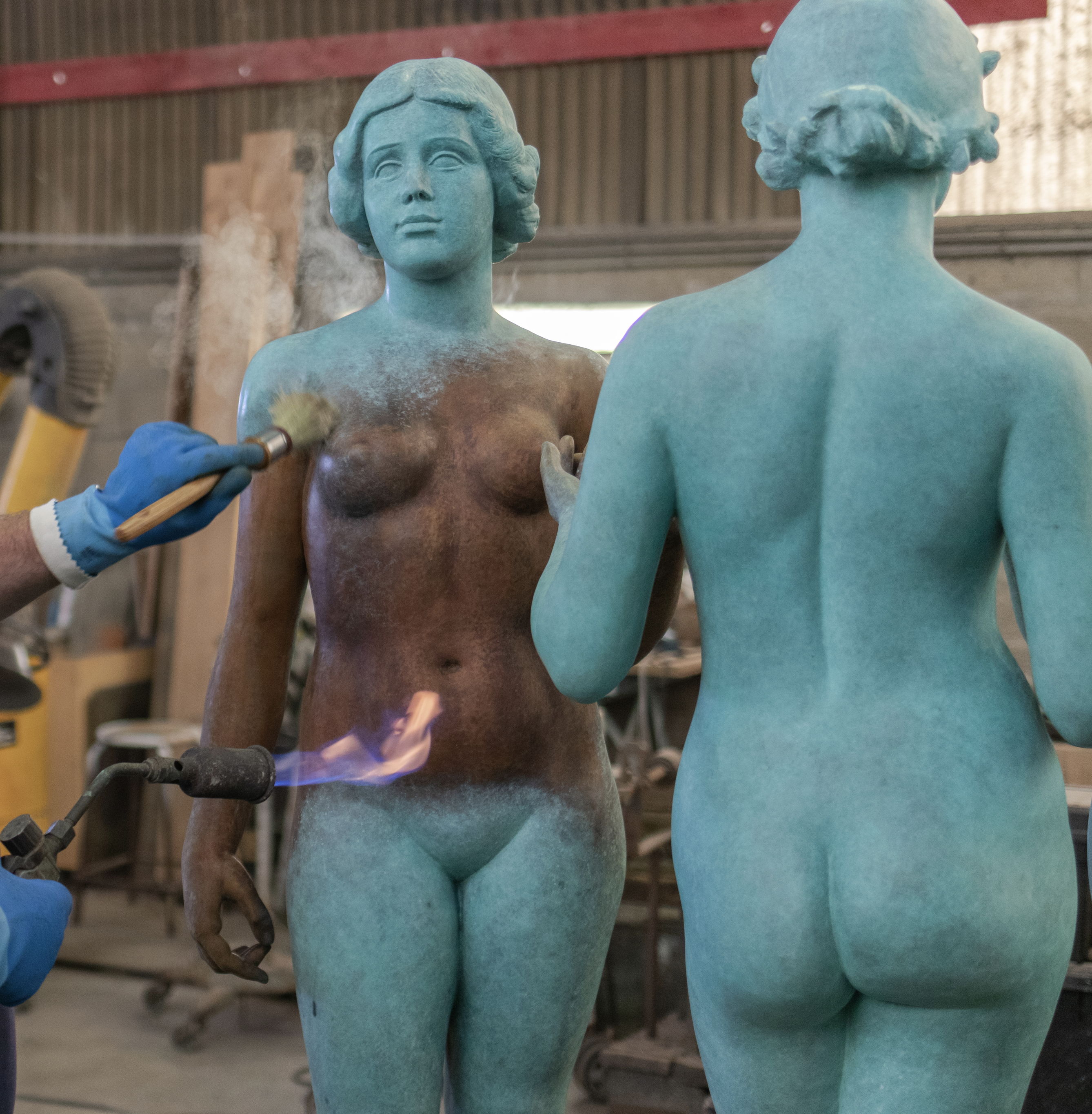
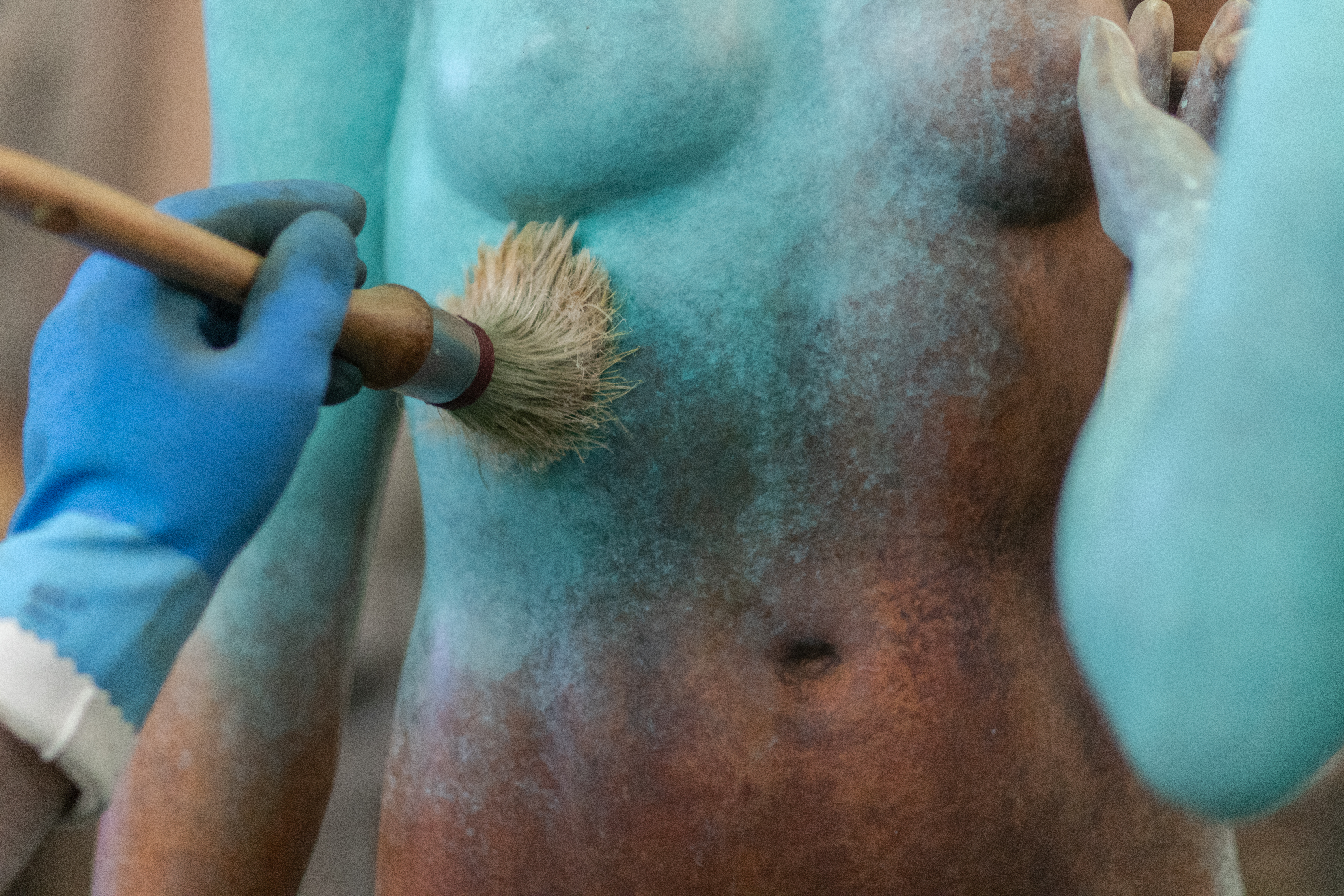
“Les Trois Nymphes de la prairie” undergoing restoration – © Quentin Croisard
Maillol in the 1930s
Following the death of Auguste Rodin in 1917, Aristide Maillol emerged as the preeminent sculptor on the European art scene. On December 8, 1931, the artist celebrated his seventieth birthday, marking the beginning of a prosperous decade. Two monuments crafted by his hands were unveiled during this period: one dedicated to the memory of Debussy in Saint-Germain-en-Laye and another paying tribute to the fallen of World War I in Banyuls. In 1933, two exhibitions were dedicated to Maillol in New York and Basel.
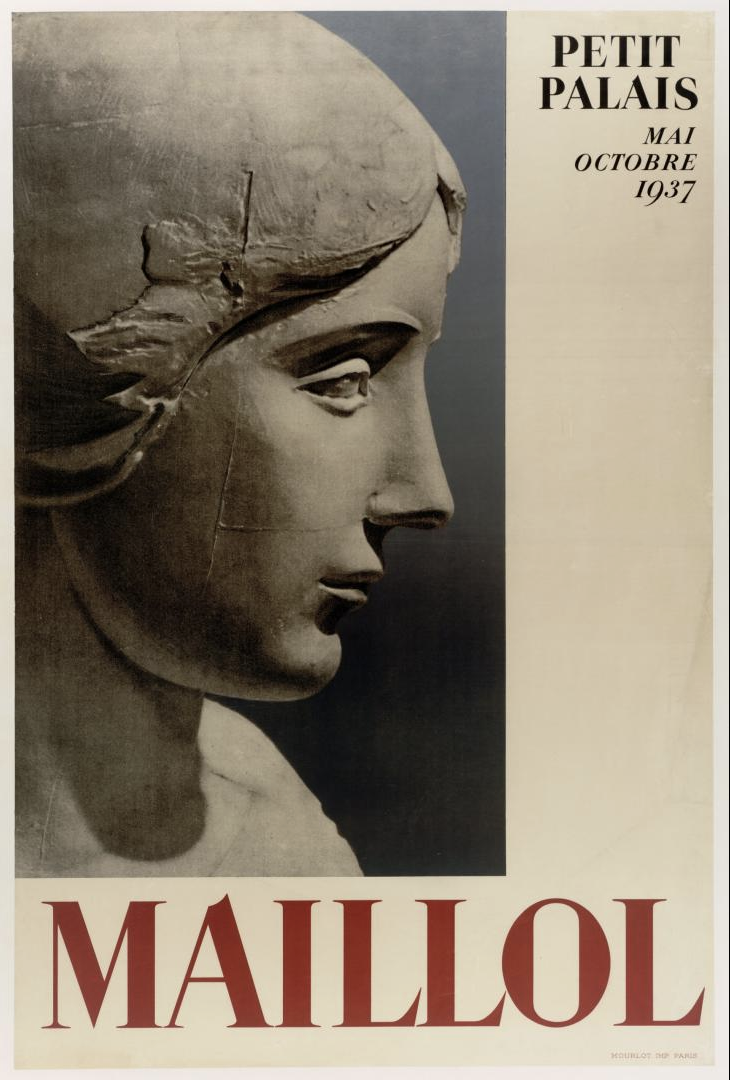
As preparations for the 1937 World Exposition were underway, the State commissioned him to create the monumental sculpture “La Montagne”, destined for the esplanade of the newly inaugurated Musée National d’Art Moderne. Simultaneously, the city of Paris commissioned a marble version – a noble material – of his work “Pomone”, for the substantial sum of 200,000 francs, one of the highest amounts ever allocated by the municipality for the acquisition of a sculpture.
In France, critics mused, “Will we not witness a comprehensive exhibition of Aristide Maillol in Paris? ”
But during that era, national museums typically only dedicated retrospectives to artists posthumously. However, the organizers of the “Les Maîtres de l’art indépendant” exhibition, scheduled to take place between May and October 1937, decided to pay tribute to Maillol by granting him three rooms to show sixty-one works. This made the sculptor the most prominently featured artist in the entire exhibition, on par with Matisse.
In order to fulfill the ambition of this event, Maillol decided to take on an unprecedented challenge in his career: creating a composition with three figures. Up until then, the artist had not been known for sculpting groups, and it took him seven years of labor to bring this ambitious work to fruition.
From the monument of André Chénier to the “Les Trois Nymphes de la prairie”
Originally, Maillol conceived this composition featuring multiple female figures in the context of creating a tribute monument to the revolutionary writer André Chénier for the city of Carcassonne.
According to Jean Girou, it was the reading of Chénier’s verses that inspired Maillol to honor the poet: “C’était quand le printemps a reverdi les prés / La Fille de Lycus, vierge aux cheveux dorés, / Dans les monts Achéens, non loin de Cérynée.” The sculptor then envisioned his group: “I see young girls in fervent homage and in naive freshness“.
While the arrangement of three female figures may evoke the classical iconography of the Three Graces, Maillol, who was attentive to the form of the bodies, believed they were too “powerful to represent [them]“. After considering the title “Les Prairies en fleurs“, he chose “Les Nymphes“, with each young girl embodying the flower. She is crowned with – the daisy, the buttercup, and the marjoram.
To this classical tradition, Maillol introduced elements of 20th-century modernity. In “Les Trois Nymphes de la prairie”, he removed the anecdotal accessory, the flower garland, thus distancing the sculpture from allegory, revealing only the suspended gesture in the air. This attention imparts a new meaning to the work, transforming it into a reflection on form within space.
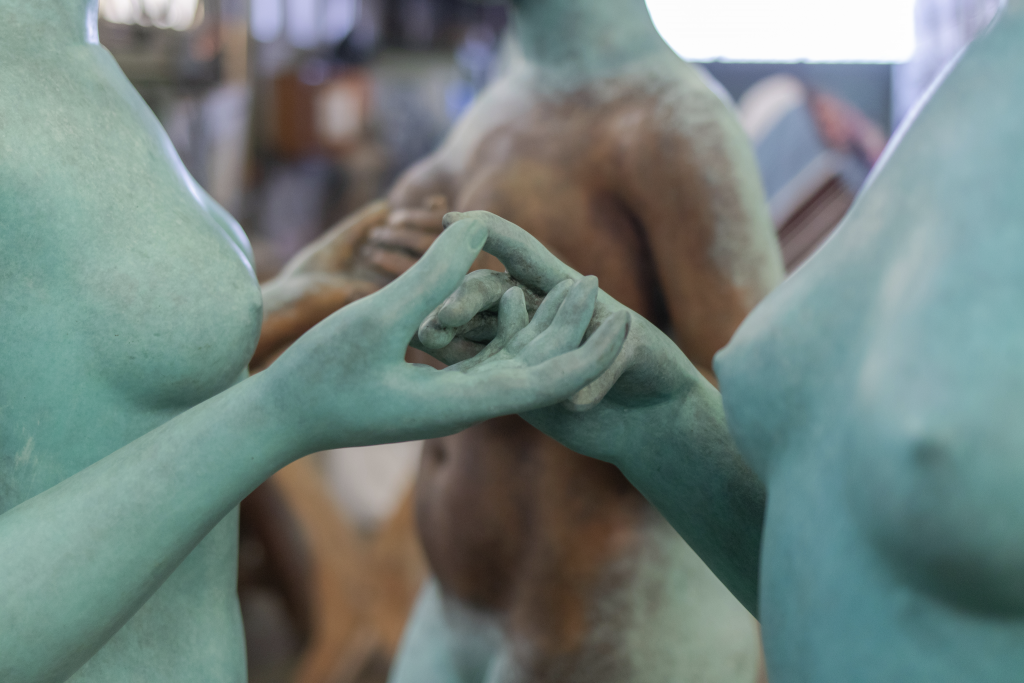
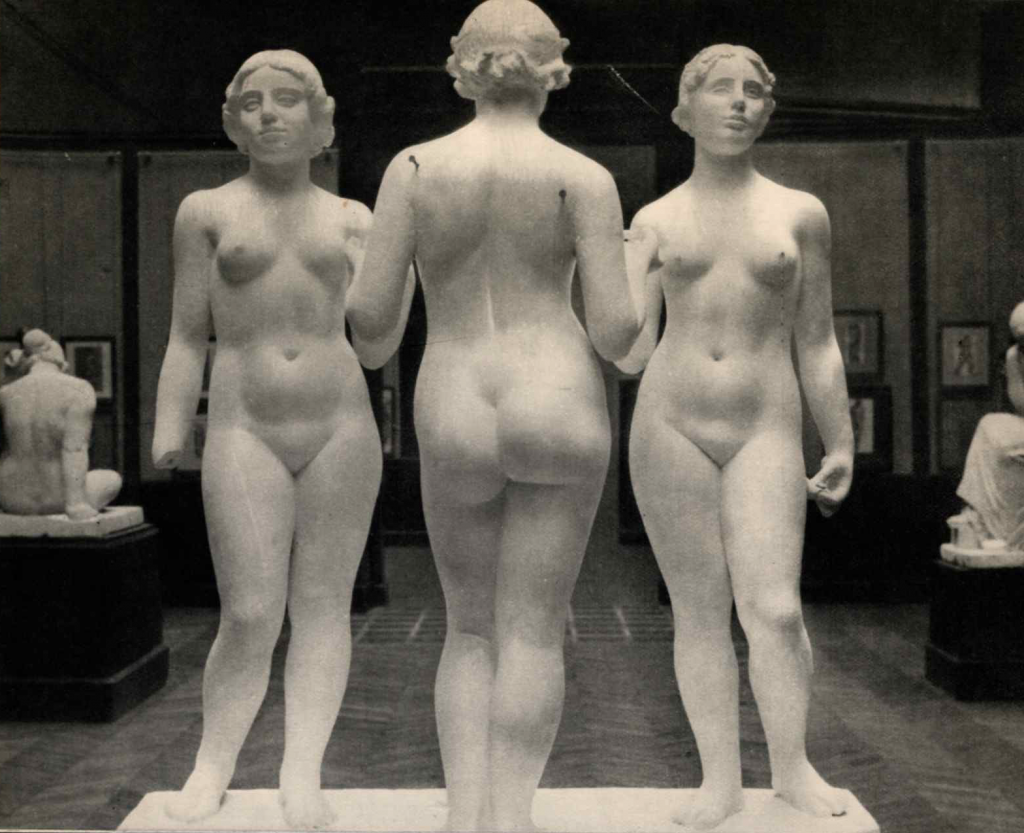
Legacy of “Les Trois Nymphes de la prairie”
At “Les Maîtres de l’art indépendant” exhibition in 1937, Maillol displayed an unfinished plaster (one Nymph is missing a hand), yet he quickly received orders for metal castings, attesting to his international reputation.
The Tate Gallery in London was the first museum to request a lead casting in 1939, followed by the Kunstmuseum in Bern in 1947, and the Minneapolis Museum in 1949. “Les Trois Nymphes de la prairie” are also among the sculptures donated to the state in 1964 by Dina Vierny and Lucien Maillol, supported by André Malraux, to adorn the Jardins du Carrousel. The composition also captivated private collectors, including Lucille Ellis Simon – Norton Simon’s wife – who donated her sculpture to the National Gallery in Washington in 1991. The bronze copy at the Maillol Museum is an artist’s proof purchased by Dina Vierny for the opening of the Maillol Museum in 1995.
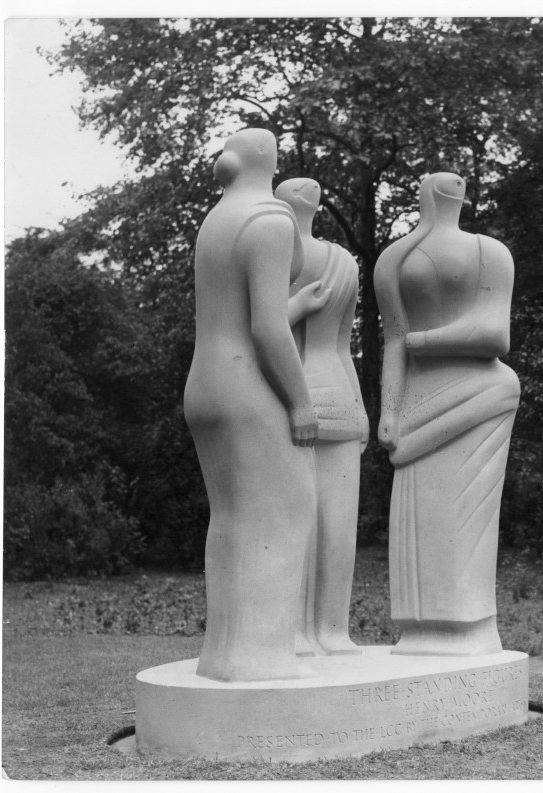
As an iconic work by Maillol and one of the last major compositions completed in his career, seven years before his accidental death, the piece encapsulates his aesthetic principles: the exploration of the female form, balancing fullness of shapes and linear silhouettes, while transcending his established style.
The modernity of “Les Trois Nymphes de la prairie” struck his contemporaries. Henri Frère, particularly effusive, asserted that “nothing in modern art can produce a deeper impression than the sight of this calm assembly of great forms, each articulate and accomplished. Each was a distinct thought. All breathed power, grace combined with grandeur, and a naive and divine poetry”.
Maillol’s free form and innovative approach influenced artists of the next generation. Ten years after its creation, Henry Moore proposed a robust and grounded version of “Les Maîtres de l’art indépendant” to decorate London’s Battersea Park, taking ‘living architecture’ to its zenith, following Maillol’s lead.
Bibliography :
Jean Girou, Sculpteurs du Midi, Floury, 1938.
André Chénier, Œuvres complètes, Librairie Ch. Delagrave, 1907.
Bernadette Contensou, Paris 1937, l’Art Indépendant, catalogue de l’exposition, Musée d’art moderne de la Ville de Paris, 12 juin-30 août 1987.
Thierry Dufrêne (dir.), Maillol héritage, catalogue de l’exposition, Galerie Dina Vierny, 15 avril-25 juin 2022.
Find out more about our current exhibtion : Andres Serrano. Portraits of America
DISCOVERMentions légales | CGU | Données personnelles | Gestion des cookies
Musée Maillol, 2021
Mentions légales | CGU | Données personnelles | Gestion des cookies
Musée Maillol, 2021